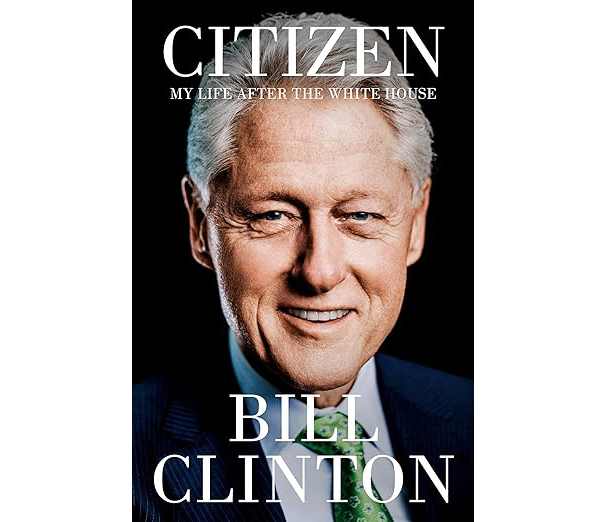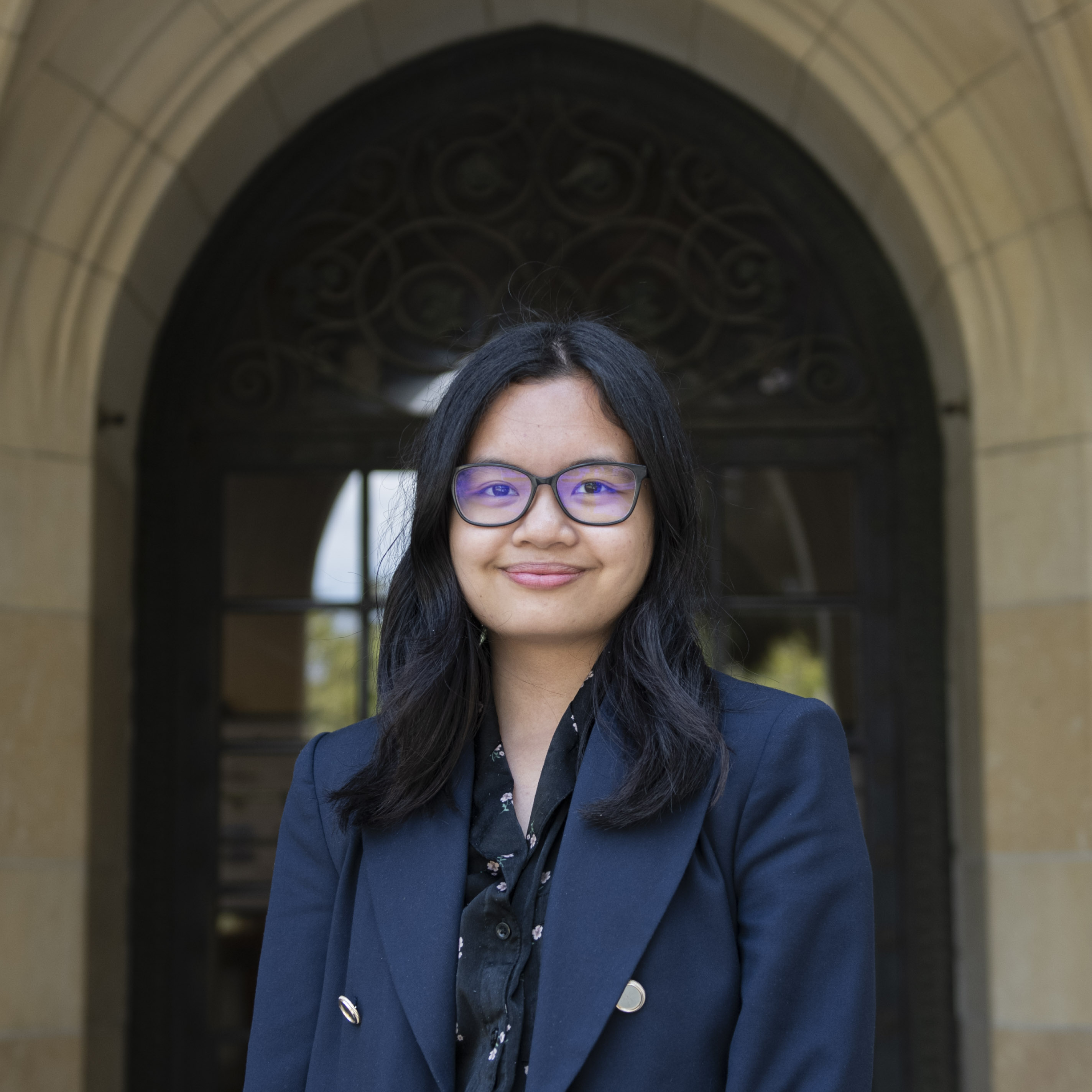Book review: Bill Clinton memoir “Citizen” spotlights former president’s life after office

Pictured is Bill Clinton posing for his portrait on the cover of “Citizen: My Life After The White House.” The memoir showcases what Clinton’s life has been like after presidency. (Courtesy of Knopf Publishing)
“Citizen: My Life After the White House”
Bill Clinton
Knopf Doubleday Publishing Group
Nov. 19

By Amy L. Wong
Dec. 3, 2024 4:25 p.m.
Bill Clinton’s memoir, “Citizen: My Life After the White House,” is an informative and heartfelt read for those curious about the life of a former president.
Published Nov. 19, Clinton’s book uses a first-person perspective to describe his life as a private citizen after almost 30 years in politics. A follow-up from “My Life,” which was published in 2004, “Citizen” details his thoughts in 420 pages on more recent events, a notable one being his wife Hillary Clinton’s campaign for presidency against Donald Trump in 2016. Since Clinton left office in January 2001, he has witnessed America struggle through the aftermath of 9/11, the Haiti earthquake, the Great Recession and more. Using his contacts with leaders in the United States and abroad, he sought to assist Americans through the Clinton Foundation and communicated his support through his speeches. While “Citizen” can be critiqued by casual readers as being “too dry,” the book serves as Clinton’s crash course on modern history with details from his personal life to provide an insider’s perspective.
[Related: Book review: ‘The Honey Witch’ simply but sweetly depicts whimsical romance, enchanting imagery]
“Citizen” excels at intertwining Clinton’s personal experiences with information about global events, while simultaneously detailing a heartwarming account of his relationship with other leaders. One prime example is when then-President George W. Bush and Clinton visited Sri Lanka to survey the damage done by a tsunami in 2004. Clinton empathetically recounts Bush holding artwork created by children who lost their livelihoods to the natural disaster “as if they were priceless masterpieces. For him, they were.”
In the eight pages of the book that include photos, two of the photos are from this experience. The first of the two photos shows then-President Bush and Clinton interacting with children from Sri Lanka, where Clinton holds up a colorful paper. The other photo is one of the children’s drawings of a peaceful ocean with lily pads and swans. The addition of these photos humanize the victims of the tragedy and the men who responded to it – a beautiful break from the information-heavy text.
Clinton also clues the reader into smaller details of life as a former president turned private citizen. When he visited North Korea to bring two imprisoned American journalists back to the U.S. in August 2009, he was explicitly told by the White House that he was not authorized to engage in diplomacy. North Korea’s leader at the time – Chairman Kim Jong Il – offered him an opportunity to discuss the two countries’ future relations, but Clinton refused. Through this anecdote, Clinton effectively outlines some of the limitations of being a former president. He also mentions in “Citizen” that he was instructed by the White House not to smile, not to frown and instead to be expressionless for the official photo in North Korea. The restrictions imposed on him depict a life of careful movements long after his campaigns for office and his time in the White House, which provides readers with some insight into the serious demeanor politicians carry throughout their lifetime.
In the second half of “Citizen,” Clinton reveals his advice for those engaging in politics, which he refers to as “Clinton’s Rules of Politics.” Some of these rules are written humorously. Rule four states that if someone can shift public criticism from themselves to you, you should prepare to be “barbecued.” Others are hopeful. Rule 12 urges the reader to not give up on people and to continue searching for the more humanized version of others. Additionally, there are rules applicable to everyone, not just those intrigued by politics. Rule two advises against drinking in public and rule 10 suggests to consider criticism seriously but to not take it personally, the latter of which he learned from his wife. Clinton’s inclusion of these rules creates a strong connection between the reader and himself, with Clinton being a personal advisor guiding the reader to succeed in politics and in life.
Although most of the book is heartfelt, what comes off as a half-hearted gesture is Clinton’s brief mention of Monica Lewinsky. Given the severity of the Clinton-Lewinsky scandal, where 49-year-old Clinton had a sexual affair with 22-year-old Lewinsky with the former denying such relations, readers are likely to find disingenuity in how little Clinton acknowledges one of his public mistakes.
Clinton barely mentions Lewinsky, with only a page dedicated to his thoughts on the scandal. Even then, he seems more preoccupied by how he responded to an interview in June 2018 when asked about his apology to Lewinsky, rather than the affair itself. While Clinton does applaud Lewinsky for her advocacy work against bullying, it is only a mere sentence and can leave the reader feeling as though Clinton wants to rush through one of the most negative aspects of his legacy.
However, Clinton’s love for his wife and daughter can be felt throughout the entire book. Even when explaining the interior design of their bedroom, Clinton connects his thoughts back to Hillary. He explains that he wanted to buy their house the moment he saw the bedroom because of how it let in light. He told Hillary that she would enjoy waking up in the room because the light would stream in even when the sky was full of clouds, which would help her be in a good mood and win the Senate election.
[Related: Book review: Sally Rooney castles grief, recaptures sociopolitical love in ‘Intermezzo’]
Similarly, Clinton’s pride in his daughter radiates off the pages. Clinton discloses that he reread Chelsea’s undergraduate thesis and found it to be well-researched, unbiased and of high quality. He takes care in describing the topic of her thesis, which was his involvement in the Irish peace process. When he informs the reader that Chelsea graduated from Stanford with highest honors, he sounds nothing short of a proud father.
While Bill Clinton may be remembered by the public as an influential former president, readers of “Citizen: My Life After the White House” will also think of him as a leader beyond his presidency, as a supportive husband and father.


